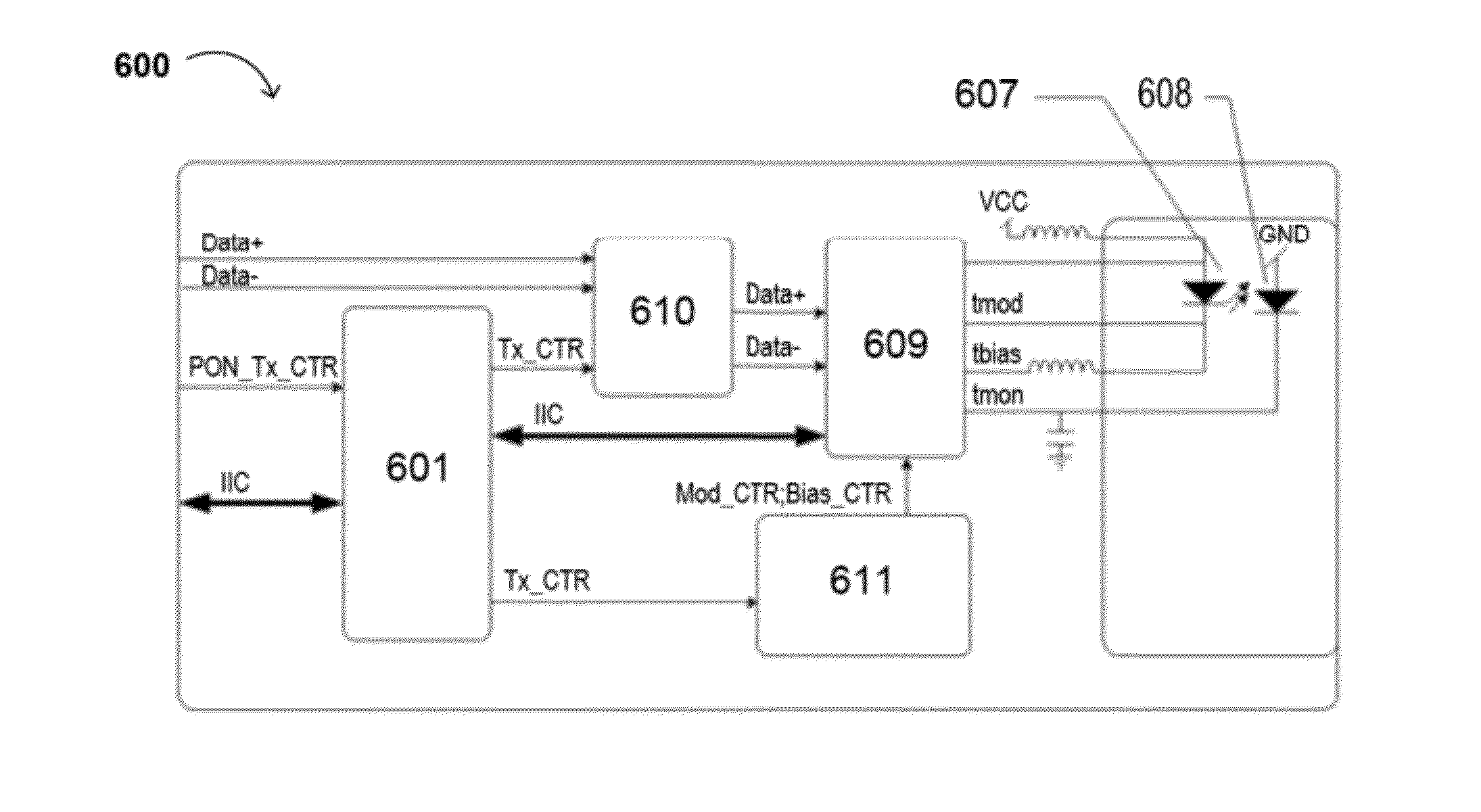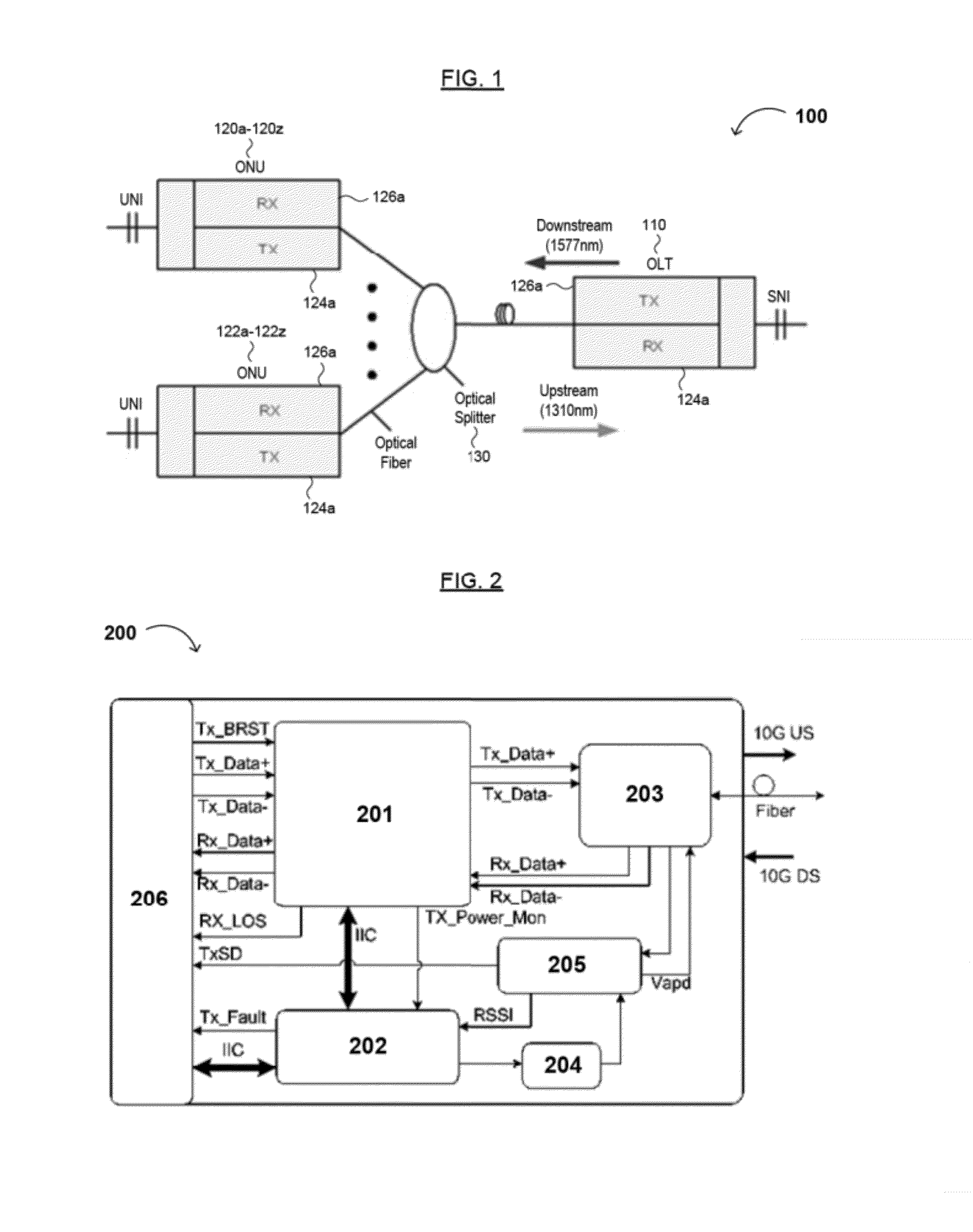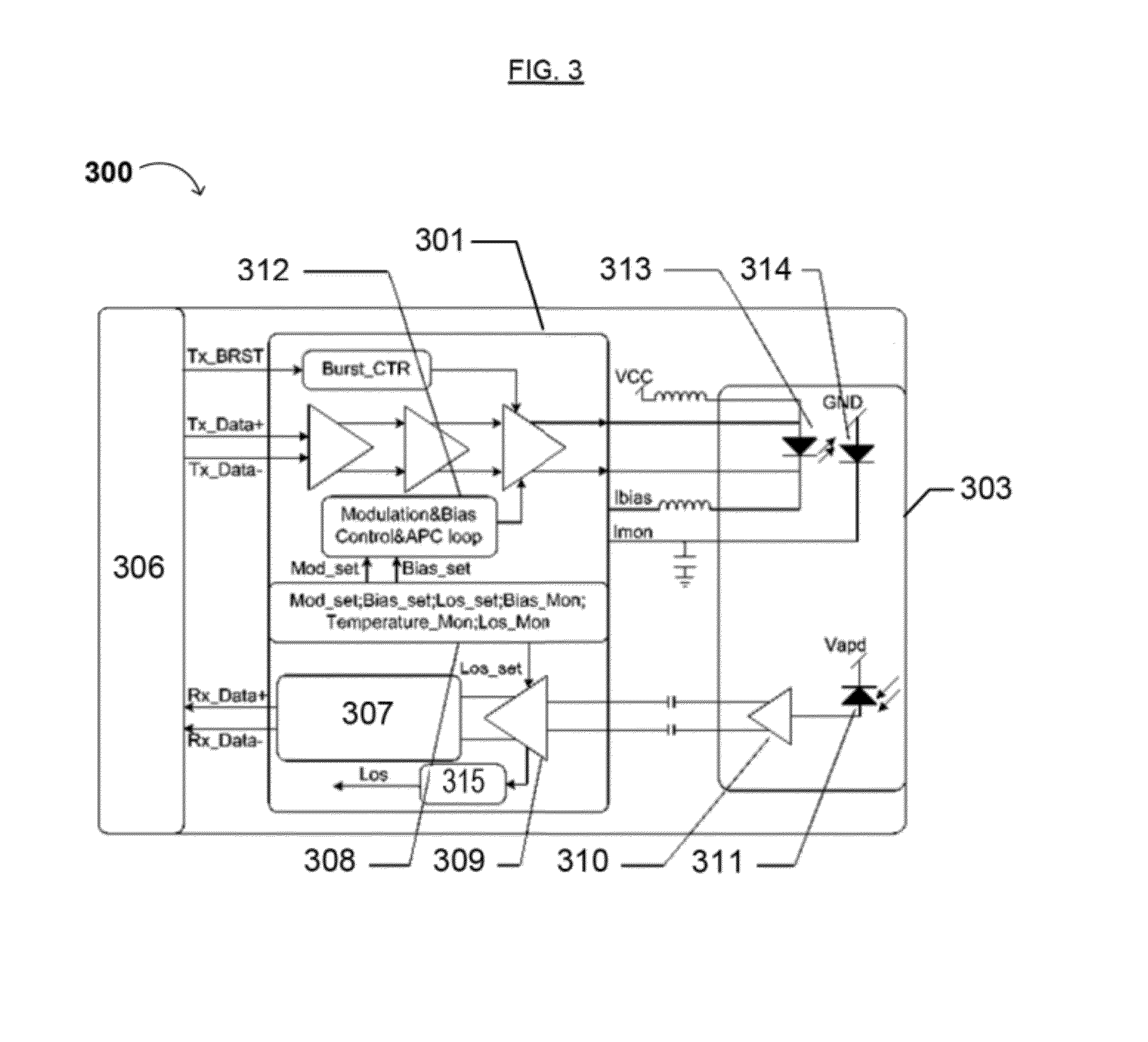[0007]Embodiments of the present invention relate to a high-speed and / or power-saving bi-directional transceiver comprising a burst
laser driver; a burst output power monitoring and indicating circuit;
control logic (e.g., a
microcontroller unit); bi-directional optics; an
avalanche photodiode (APD) bias
control circuit; a
limiting amplifier; and a receiver optical power monitoring circuit. Optionally, the present transceiver includes (and is packaged in) a
small form factor pluggable (SFP+) connector housing. The present ONU transceiver provides an
effective solution to reduce energy and / or
power consumption during a silent operational mode, without significant adverse effects on normal communications in the PON
system.
[0008]Various embodiments of the present invention also relate to a high-speed and / or energy-saving bi-directional transceiver comprising a
transmitter (TX) burst energy-saving circuit; a TX burst holding circuit; a receiver (RX) continuous energy-saving circuit; a RX continuous holding circuit; and control logic (e.g., a
microcontroller,
microprocessor,
signal processor, ASIC, etc.) configured to control one or more of the TX burst energy-saving circuit, TX burst holding circuit, RX continuous energy-saving circuit and RX continuous holding circuit. In accordance with a dynamic time slot, the TX energy-saving circuit turns off all functional components of the
transmitter during an
idle time (e.g., when the transmitter enters an idle or stand-by mode), and together with the burst holding circuit, quickly resumes normal functions during working time (e.g., when the transmitter is to enter an operational mode). The continuous RX energy-saving circuit quickly turns off the receiver circuitry during a silent time (e.g., an idle or stand-by mode) and, together with the RX burst holding circuit, enables the receiver to resume the work state (e.g., an operational mode) according to the
system requirements. The control logic saves an RX status and provides access to and / or by energy-saving
software.
[0013]With respect to conventional technology, the present invention provides a burst laser driver and an RX
limiting amplifier capable of operating in a 10 Gb / s network, integrated on a
single chip to reduce the cost of the components and the
layout space / area of the design. Secondly, the burst laser driver controls the burst
signal output of the laser via the control logic and provides an
automatic power control loop that allows for current sampling. Deterioration of the optical power due to laser aging is reduced, and burst laser performance can be regulated and adjusted without additional external circuitry (e.g., switching logic and analog sampling circuitry). To realize system performance reporting, the burst optical power indicating circuit and the control logic monitor the burst power, so as to realize system performance reporting. The present limiting
amplifier with RX signal indication circuitry and optional
clock recovery circuitry satisfies the requirements of 10 Gb / s optical networks with respect to the signal amplitude and fluctuation, ensuring accurate transmission of the optical signals and accurate monitoring of the RX optical signals.
[0014]In various embodiments of the present invention,
Optical Line Termination (OLT) bandwidth is allocated by
time division multiplexing (TDM; e.g., burst TDM) in an uplink PON system, in which the TX (or circuits thereof) can be turned off by the TX burst energy-saving circuit. When the TX function (e.g., the
uplink transmission) is idle, the TX burst holding circuit (e.g., in response to a respective
control signal provided by the PON system) turns off the transmitter or a number of circuits in the transmitter, saving energy in and the operational status of the transmitter. When uplink transmissions and / or communications are needed, the transmitting function of the ONU transceiver can be quickly resumed according to the saved operational status.
[0015]Optionally, the ONU transceiver may receive OLT downlink service (e.g., data, instructions, etc.). When downstream operations and data are not received by the system, the RX (and / or circuits thereof) can be turned off according to the respective
control signal from the PON system, saving energy in and the operational status of the receiver. When downlink operations are needed, the receiving function of the ONU transceiver can be quickly resumed according to the saved operational status.
[0017]Compared to conventional 10 G ONU technology, the present invention advantageously provides one or more energy-saving control circuits that reduce maximal consumption during transceiver
silence, and are capable of switching parts of the transceiver to working or energy-saving
modes (e.g., according to external system control logic), ensuring normal communications. The internal control logic (e.g., a microcontroller) can efficiently coordinate all transmitter and receiver functional circuits and allow operational status inquiries. Thus, the present invention overcomes the
disadvantage of high
power consumption in existing 10 G symmetrical ONU technology, and provides an energy saving circuit for bi-directional transceivers to effectively reduce
energy consumption of ONUs in a PON system (e.g., a 10 Gb / s EPON system).
 Login to View More
Login to View More  Login to View More
Login to View More 


